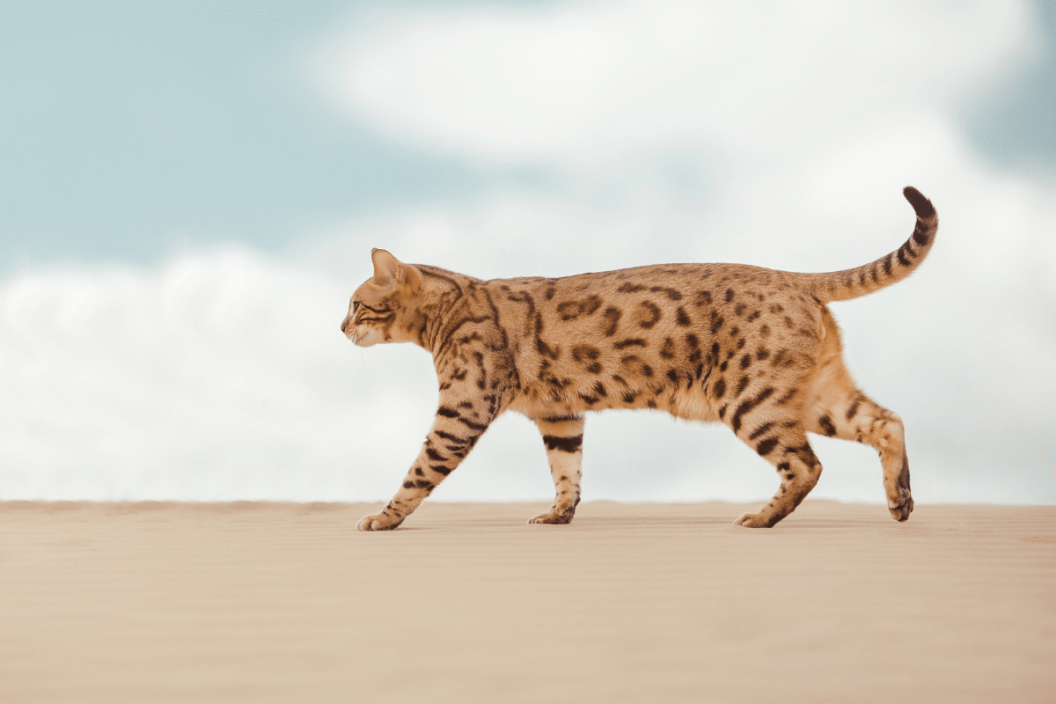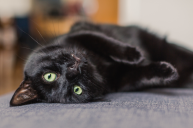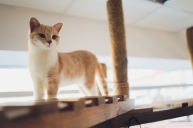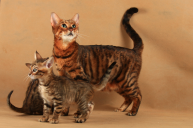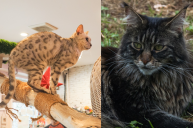Meet the beautiful and exotic Savannah cat breed!
The Savannah cat breed contains many similarities to the Bengal and brown spotted tabby cats. However, they are an entirely different breed with their own breed standards! Cat owners who enjoy dog-like cats with a high energy level will enjoy having one of these frisky felines as a family member! These lap cats have a beautiful coat color and defining black spots, but they are a relatively new breed, and Savannah breeders are often difficult to locate due to hybrid laws on breeding.
History
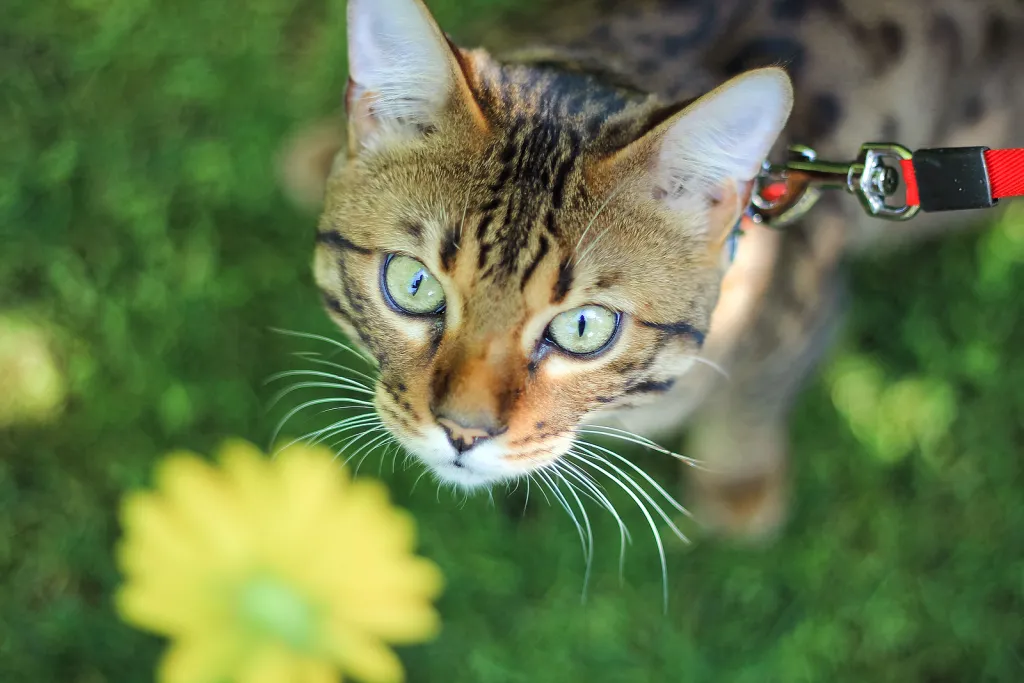
Savannah cats are a hybrid cat breed originally introduced in the late twentieth century. The Savannah cat preserves the huge perked ears, long legs, and spotted coat of its African serval ancestors while maintaining a pleasant disposition. Savannah cats are still a rather unusual breed, despite being introduced a few decades ago. Some states put limitations on catteries due to hybrid breed laws, which are generally based on certain generation Savannah cats. F1 savannah cats are closely regulated, since they are the direct result of a cross between an oriental shorthair or other domestic cat, and a serval cat. F2 savannah cats are generally more desirable due to the smaller amounts of serval blood.
Savannah cats mix a domestic cat and a serval cat, which is a medium-sized, large-eared wild African cat. The first Savannah cat was born in 1986, and she was named Savannah after her serval parent's habitat. In just a few decades, the popularity and demand for these cats has skyrocketed, and they can now be found all over the world.
Savannah cats are a cross between domestic cats and servals, which are medium-sized, large-eared wild African cats native to Africa. Judee Frank created the first Savannah cat on April 7, 1986, when she mixed a male serval with a Siamese domestic cat. In 2001, the International Cat Association (TICA) designated it as a newly recognized breed. In May 2012, TICA designated it as a championship breed for the first time. Cat breeders began to produce this interesting breed more frequently.
Appearance

Savannah cats have a striking and exotic look. They are tall and slender, with long necks and large ears. Their coat is similar to that of a wild cat found on the African savanna. According to the Guinness Book of World Records, Savannahs may grow to reach 17 inches tall, making them the world's tallest domestic cat. Savannah eyes are somewhat hooded and almond-shaped, with a black tear duct line, and they have a stunning, friendly, yet piercing stare. Savannah cats are sometimes mistaken for ocicats or Egyptian maus, who resemble their wild cousins with their spotted coats, yet have pure domestic cat genes.
Their coat is similar to that of a wild cat found on the African savanna, and can come in multiple color varieties, including black smoke. People unfamiliar with this breed have misidentified it as a tiny cheetah or another sort of wild cat. Their height and weight are entirely determined by how many generations a cat is away from her wild serval progenitor.
Personality

The Savannah cat is more likely to leap onto the top of your kitchen cabinets than she is to sit idly by her food bowl. Some owners choose to leash train their cats and take them on outdoor adventures. Savannahs can jump an astounding 8 feet in height and are easily trained. They especially enjoy tall cat trees and similar climbing toys for playtime.
They have a reputation for being quite chatty, having a wide range of unique vocalizations. It is critical to socialize your Savannah kitten since these large house cats might grow wary of strangers. Savannahs, like dogs, are extremely devoted and will follow their favorite humans around the house for company. They have a lifespan of between 12-20 years, if they are from a reputable breeder. Health problems can arise due to this cat being fairly purebred, which is another reason to purchase from a reputable breeder.
Savannah cat litters are classified as F1, F2, F3, and so forth. These numbers reflect the number of generations elapsed since the initial wild serval genes were transferred into a certain breeding line (F1 = First Generation, etc.). As a result, the lower the number, the more probable you'll observe some crazy activity (climbing, pouncing, and "hunting" their toys). Also, keep in mind that Savannahs from earlier generations tend to be bigger and heavier.
Do you love the Savannah cat breed? Share with us on the Wide Open Pets Facebook page!
